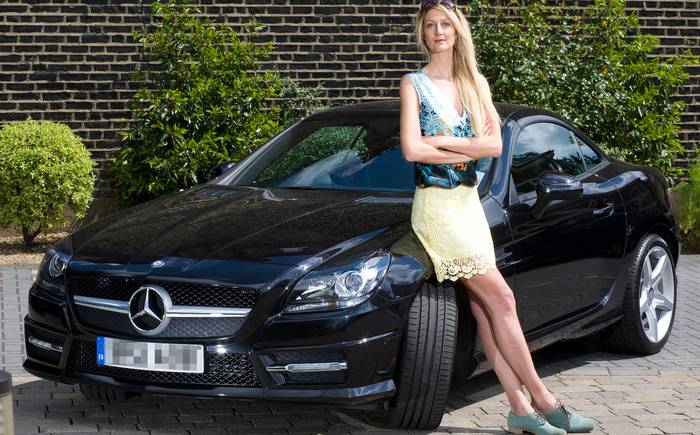My £3,000 repair bill for a scraped bumper
Fixing a car bought on finance can cost a fortune - unless you shop around
The cost of crash repairs can vary hugely between garages, as one Sunday Times reader found out. But there are experts that can tell you whether you are being treated fairly
Doing basic car maintenance yourself to save money is one thing, but many people prefer to leave complicated servicing and repairs to trained mechanics. The golden rule of taking your car to a garage is to visit more than one. Prices vary significantly. A major service that costs £300 at a franchised dealer could be £250 at an independent.
The difference in the cost of repairs is even bigger. Take the case of Jody Thorsby, above, from London, who had a crash course in the murky world of repairs after a ding in a supermarket car park in her one-year-old Mercedes-Benz SLK. The damage was minor — a scraped front left bumper. Rather than jeopardise her no-claims bonus, she decided to pay for the repairs herself, thinking the bill would be a couple of hundred pounds at most.
“I bought the car on hire purchase, and the small print of the terms and conditions says that I have to have it repaired at a franchised dealership,” Thorsby, 33, said. “So I took it to two Mercedes dealers, one in Brentford and one in Sydenham. I couldn’t believe the prices they came back with. I assumed that there had been a mistake: maybe they had got me mixed up with a different customer.”
According to the garage in Brentford, Thorsby was looking at a bill of £3,042.41. The breakdown of the charge revealed that although the damage looked superficial it was a serious job to repair.
“The list of things to do went on and on,” said Thorsby. “There were dozens of entries: remove the front bumper, replace impact absorbers, replace front left-hand wing, renew something called the clamping profile left trim and right trim and the inner covers. It barely made any sense. Then there were more entries under ‘associated work required’, which included various checks and something called a Star test, and that was before I even got to the section detailing the painting work that was required. In total they wanted £1,333.75 for parts, £775 for labour, £410.51 for the paint and the rest for additional items. Plus Vat. I nearly fainted when I read it.”
But a second shock was yet to come. The second estimate arrived and put the cost of repairs at £652.51. Instead of wading through dozens of additional works, the quote suggested that all that was required was a fresh coat of paint and some minor touching up around the damaged area.
“By this stage I was really confused. Who was right? On the one hand I didn’t want to fork out for work that wasn’t needed but on the other I didn’t want to be driving a car that was unsafe. And which, when I came to return it to the dealer after the end of the lease agreement, needed extra work which would cost me even more.”
The Sunday Times asked for an opinion from Thatcham, the safety and crash repair research centre funded by the insurance industry. This is where cars are crashed under controlled conditions to assess their safety ratings, to assign an insurance category and to develop standard, safe repair techniques that restore damaged cars to a condition at least as good as when they left the factory. We asked one of their most experienced assessors to look at the SLK and tell us which estimate was right.
The inspecting engineer, a member of the Institute of Automotive Engineer Assessors, found that the crack on the bumper and the bent wing were repairable and no new parts were needed. He said that to ensure none of the electronic systems or sensors had been damaged, the car should be connected to a Mercedes-Benz “Star” diagnostic workshop system. His estimate of the cost of removing the front bumper, repairing the bumper and wing and repainting the damaged areas came to a maximum of £1,053.
“In our view it was not necessary for all the repairs listed in the higher quote to be carried out in order to repair the damage,” said the inspector. “However, the cheaper quote neglected to check that various sensors had not been damaged in the collision.”
The opacity of repair costs is nothing new, but according to some experts, drivers could be facing higher bills generally, thanks to the growth in the number who buy their cars with finance deals. These deals often include the proviso that drivers should use franchised dealers for all repairs and servicing. Such outfits are generally more expensive than independent garages but in theory offer better, or at least more tightly controlled, service.
The advice from Thatcham is “to use bodyshops who are a part of an insurer-approved repair network or alternatively who are holders of the vehicle repair kitemark and whose operation has therefore been verified by a third party”. A searchable database of these is on the British Standards Institution’s website.





